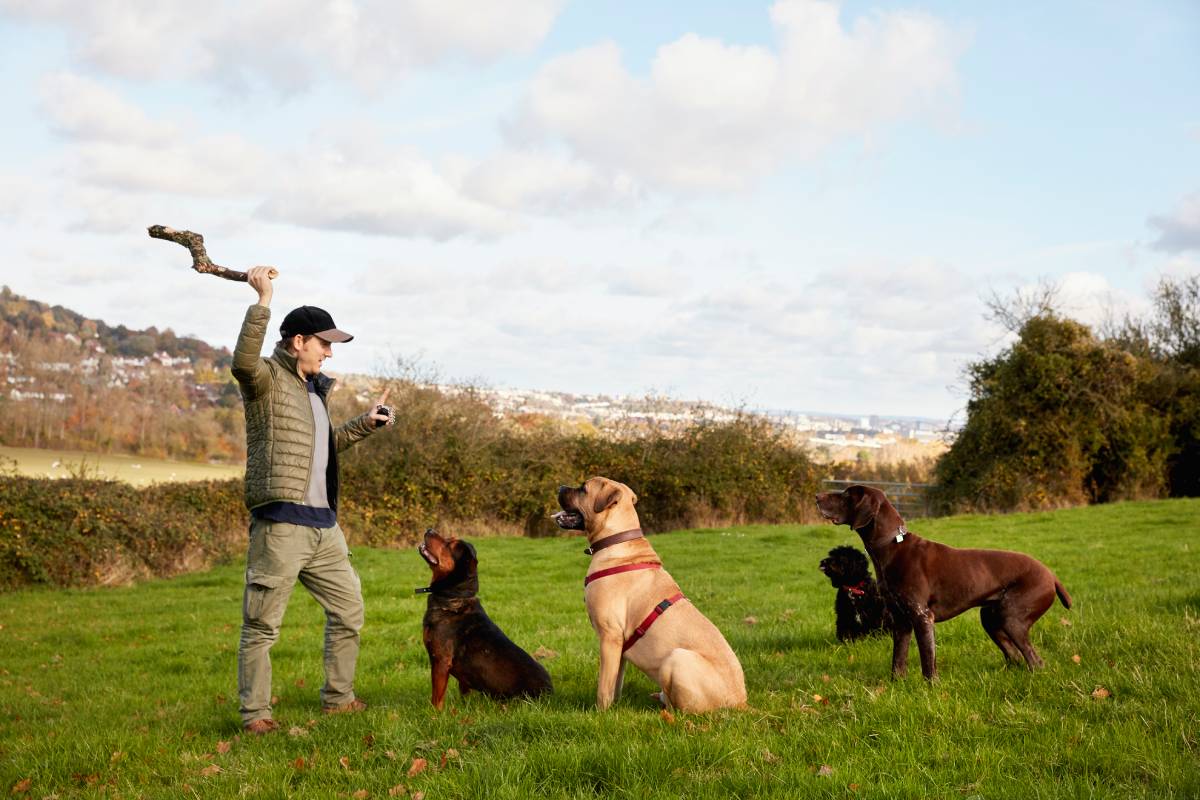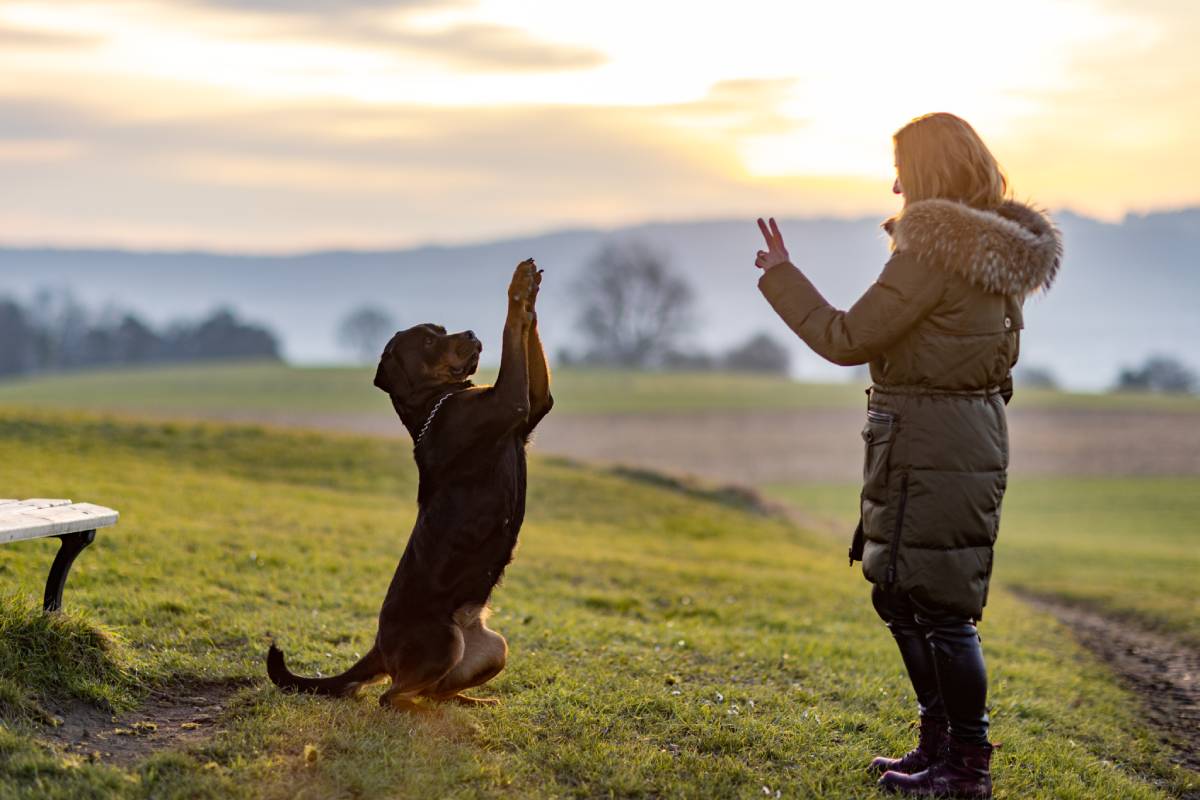Training your dog is an enriching experience that strengthens the bond between you and your furry companion while ensuring a harmonious relationship within your household. Whether you’re teaching basic obedience commands or tackling more complex behaviours, understanding the fundamentals of dog training is essential.
In this article, we’ll explore the keys to effective dog training, including the best age to start, the most challenging commands, and the breeds known for their trainability. By following these principles and techniques, you can embark on a rewarding journey of teaching your dog essential skills and behaviours.
Can you train your dog yourself?
Yes, you can definitely train your dog yourself! Many dog owners successfully train their pets at home. It’s important to start with basic obedience training, such as teaching your dog to sit, stay, come when called, and walk on a leash. Consistency, patience, and positive reinforcement are key. You can use treats, praise, and toys to reward good behaviour and discourage unwanted behaviours.
There are also plenty of resources available, including books, online tutorials, and even dog training classes if you feel you need extra guidance. Just remember to be patient and consistent, and always use gentle, positive methods in your training.

At what age can you start teaching your dog?
You can start teaching your dog basic commands and obedience training as early as 7-8 weeks of age. Puppies have a short attention span, so training sessions should be kept short and fun. Begin with simple commands like sit, come, and stay, and gradually introduce more commands as your puppy grows and learns.
It’s important to use positive reinforcement techniques and be patient with your puppy as they learn. Starting training early helps build a strong bond between you and your dog and sets the foundation for good behaviour later in life.
How do you train your dog yourself?
Training your dog yourself involves several key steps:
- Start with Basic Commands: Teach your dog basic commands such as sit, stay, come, and down. Use treats, praise, and positive reinforcement to encourage your dog to perform these actions.
- Be Consistent: Dogs thrive on routine and consistency. Use the same commands and gestures each time you train your dog, and make sure all family members are on the same page with training methods.
- Use Positive Reinforcement: Reward your dog with treats, praise, or playtime when they exhibit the desired behaviour. Positive reinforcement helps your dog associate good behaviour with pleasant outcomes.
- Be Patient: Training takes time and patience. Don’t get frustrated if your dog doesn’t pick up on a command right away. Keep practising and be consistent with your training efforts.
- Keep Training Sessions Short: Dogs have short attention spans, so keep training sessions brief (about 10-15 minutes) and frequent throughout the day. This helps prevent your dog from becoming bored or frustrated.
- Socialize Your Dog: Expose your dog to different people, animals, and environments to help them become well-adjusted and confident. This can prevent behavioural problems down the road.
- Address Behavioral Issues: If your dog exhibits unwanted behaviours such as jumping, barking, or chewing, address them calmly and consistently using positive reinforcement techniques.
- Consider Professional Help: If you’re struggling with training or your dog has behaviour problems that you’re not sure how to address, consider seeking help from a professional dog trainer or behaviourist.
Remember, every dog is different, so be patient and adjust your training methods as needed to suit your dog’s individual personality and needs.

What is the hardest dog command?
The difficulty of dog commands can vary depending on the individual dog’s temperament, breed, and previous training experience. However, some commands are generally considered more challenging to teach than others.
One of the commands often considered difficult is “stay,” particularly for dogs with high energy levels or those easily distracted. Teaching a dog to remain in one place until released requires patience, consistency, and gradual increases in duration and distance.
Another challenging command is “heel,” which involves teaching the dog to walk calmly beside you without pulling on the leash. This command requires consistent reinforcement and may take time to master, especially for dogs who are used to pulling or leading on walks.
Additionally, commands that require more complex behaviours, such as “roll over,” “play dead,” or “fetch specific objects by name,” can be challenging and may require more time and effort to teach.
Ultimately, the hardest command for a dog will depend on the individual dog’s abilities, personality, and the training methods used by their owner. Consistency, patience, and positive reinforcement are key to successfully teaching any command.
Which dog breed is the best to train?
The “best” dog breed for training depends on various factors such as your lifestyle, experience level, and what you’re looking for in a companion. However, some breeds are known for their trainability and eagerness to please. Here are a few breeds that are often considered highly trainable:

- Border Collie: Border Collies are renowned for their intelligence, focus, and work ethic. They excel in obedience training, agility, and other canine sports.
- German Shepherd: German Shepherds are highly intelligent, loyal, and versatile dogs. They are often used as police and service dogs due to their trainability and ability to learn complex tasks.
- Poodle: Poodles are not only known for their hypoallergenic coats but also for their intelligence and eagerness to learn. They come in three sizes—standard, miniature, and toy—and excel in obedience training and various dog sports.
- Golden Retriever: Golden Retrievers are friendly, eager-to-please dogs that respond well to training. They are known for their gentle nature and are often used as therapy and assistance dogs.
- Labrador Retriever: Labs are intelligent, outgoing, and trainable dogs. They are quick learners and excel in obedience training, hunting, and various dog sports.
- Australian Shepherd: Australian Shepherds are highly intelligent and energetic dogs that thrive on mental and physical stimulation. They excel in obedience training, agility, and herding activities.
- Doberman Pinscher: Dobermans are intelligent, loyal, and protective dogs that respond well to training. With proper socialization and training, they make excellent companions and family pets.
It’s important to note that individual dogs within a breed can vary in temperament and trainability, so it’s essential to consider each dog’s personality and needs when choosing a breed for training. Regardless of breed, consistent training, positive reinforcement, and patience are key to successfully training any dog.
In conclusion
Training your dog is a journey filled with patience, dedication, and joyous moments of accomplishment. Regardless of your dog’s breed or age, the principles of positive reinforcement, consistency, and patience remain paramount. Remember to tailor your training approach to your dog’s individual needs and personality, and celebrate the small victories along the way.
With time, effort, and a loving bond, you’ll not only cultivate a well-behaved companion but also deepen the special connection you share with your canine friend. So, embrace the adventure of training your dog, and enjoy the countless rewards that come with it.










